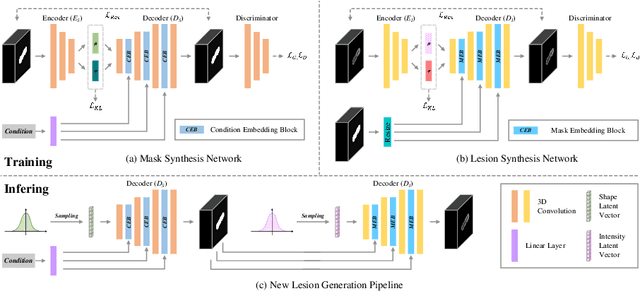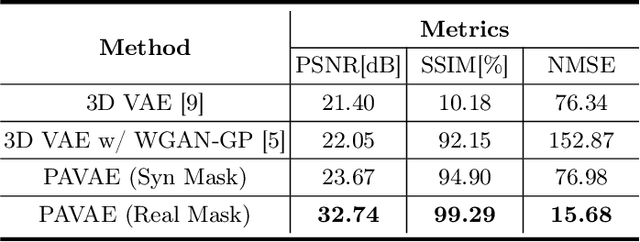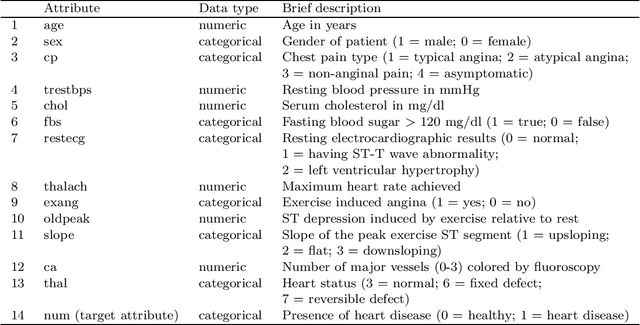Chengyuan Wu
Brain Lesion Synthesis via Progressive Adversarial Variational Auto-Encoder
Aug 05, 2022



Abstract:Laser interstitial thermal therapy (LITT) is a novel minimally invasive treatment that is used to ablate intracranial structures to treat mesial temporal lobe epilepsy (MTLE). Region of interest (ROI) segmentation before and after LITT would enable automated lesion quantification to objectively assess treatment efficacy. Deep learning techniques, such as convolutional neural networks (CNNs) are state-of-the-art solutions for ROI segmentation, but require large amounts of annotated data during the training. However, collecting large datasets from emerging treatments such as LITT is impractical. In this paper, we propose a progressive brain lesion synthesis framework (PAVAE) to expand both the quantity and diversity of the training dataset. Concretely, our framework consists of two sequential networks: a mask synthesis network and a mask-guided lesion synthesis network. To better employ extrinsic information to provide additional supervision during network training, we design a condition embedding block (CEB) and a mask embedding block (MEB) to encode inherent conditions of masks to the feature space. Finally, a segmentation network is trained using raw and synthetic lesion images to evaluate the effectiveness of the proposed framework. Experimental results show that our method can achieve realistic synthetic results and boost the performance of down-stream segmentation tasks above traditional data augmentation techniques.
Topological Machine Learning for Mixed Numeric and Categorical Data
Mar 10, 2020



Abstract:Topological data analysis is a relatively new branch of machine learning that excels in studying high dimensional data, and is theoretically known to be robust against noise. Meanwhile, data objects with mixed numeric and categorical attributes are ubiquitous in real-world applications. However, topological methods are usually applied to point cloud data, and to the best of our knowledge there is no available framework for the classification of mixed data using topological methods. In this paper, we propose a novel topological machine learning method for mixed data classification. In the proposed method, we use theory from topological data analysis such as persistent homology, persistence diagrams and Wasserstein distance to study mixed data. The performance of the proposed method is demonstrated by experiments on a real-world heart disease dataset. Experimental results show that our topological method outperforms several state-of-the-art algorithms in the prediction of heart disease.
Topological Machine Learning for Multivariate Time Series
Nov 27, 2019



Abstract:We develop a framework for analyzing multivariate time series using topological data analysis (TDA) methods. The proposed methodology involves converting the multivariate time series to point cloud data, calculating Wasserstein distances between the persistence diagrams and using the $k$-nearest neighbors algorithm ($k$-NN) for supervised machine learning. Two methods (symmetry-breaking and anchor points) are also introduced to enable TDA to better analyze data with heterogeneous features that are sensitive to translation, rotation, or choice of coordinates. We apply our methods to room occupancy detection based on 5 time-dependent variables (temperature, humidity, light, CO2 and humidity ratio). Experimental results show that topological methods are effective in predicting room occupancy during a time window.
 Add to Chrome
Add to Chrome Add to Firefox
Add to Firefox Add to Edge
Add to Edge